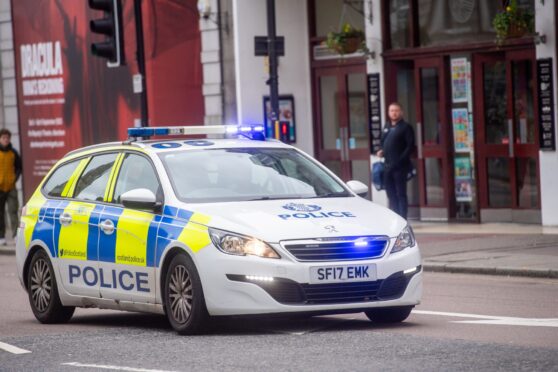MP for Gordon Alex Salmond reflects on the 1916 Easter Rising.
Read the former First Minister’s thoughts:
Yesterday’s impressive parades in Dublin signal the start of a month of commemorations across Ireland to mark the centenary of the Easter Rising of 1916.
The range of dates arises from the late Easter of a century ago, with the Rising itself taking place on Monday, April 24.
On that day groups of volunteers from a number of organisations, numbering in total less than 1,000, seized the General Post Office and other buildings in Dublin.
A proclamation declaring an Irish Republic was read out by Padraig Pearse at four minutes past noon on that Easter Monday.
The ranks of the volunteers swelled a bit over the next few days as they stubbornly defended these buildings.
However, they were soon facing overwhelming odds with British Army reinforcements and an unconditional surrender was accordingly agreed the following weekend.
At this point the British authorities embarked on the first of a number of disastrous blunders by summarily court marshalling and executing fifteen rebel leaders, including all seven signatories to the Irish Proclamation including Pearse and the Edinburgh-born socialist leader James Connolly.
Although only one further execution followed, that for treason of the ultimate ringleader and former British diplomat Sir Roger Casement, the rebellion was thus sanctified in blood.
The rest of the rebels were rounded up and decanted to internment in Wales and England.
The process was immortalised in the lines of Yeats:
Now and in time to be,
Wherever green is worn,
Are changed, changed utterly,
A terrible beauty is born.
Thus the rebellion was transformed from a minority pursuit, without great support even among the ranks of Irish nationalists, to a truly “national cause”.
Incoming Prime Minister David Lloyd George released the internees later that year in an act designed to appease American opinion as well as to placate Irish sentiment.
However, the Welsh wizard’s last ditch pirouetting back towards home rule was to no avail.
The remaining leaders of the rebellion who had been jeered out of Dublin at Easter returned to a heroes’ welcome before Christmas.
In the general election of 1918 the abstentionist Sinn Fein, who had inherited leadership of the Irish movement, swept aside the moderate Irish Party and won a comprehensive victory.
Even then the British State refused to realise that the game was finally up and from there followed the guerilla war of independence, the peace Treaty and then the foundation of the Free State and partition in 1922.
It therefore came to pass that the bloody history of England and Ireland, dating back to the 12th century, and the century of troubles since, had as their ultimate turning point a haphazard armed insurrection from a handful of volunteers with no great public support which was put down within six days.
These events should certainly be commemorated. Indeed, given that Her Majesty the Queen no less has paid personal tribute to those who died fighting to free Ireland by laying a wreath in Dublin’s Garden of Remembrance it should not really be a matter of serious debate.
That remarkable visit of reconciliation of five years ago was the first time a reigning monarch had set foot in the south of Ireland since before the Easter Rising.
Commemorating a century-old Rising which led to the foundation of a state is less controversial than any attempt to justify or glorify more recent violence.
To some extent that is a matter of the passage of time but there is also a much more powerful and compelling reason.
In recent times there has been a clear ballot box opportunity on offer to both those who wished to change (and those who wished to maintain) the constitutional position of Northern Ireland and therefore no legitimate excuse for anything other than peaceful action.
In contrast, while the rebels of 1916 had no popular mandate for their actions, it can be argued that for much of the previous century England had the full opportunity to react appropriately to the parliamentary and impeccably constitutionalist tradition of leaders such as Parnell and Redmond.
Westminster singularly failed to do so.
Michael D Higgins, the intensely likeable and erudite Uachtaran na hEireann (president of Ireland) in supporting the commemoration programme has elegantly argued that Irish history must be contextualised and no longer subject to some kind of collective amnesia.
However, what he has in mind is not the danger of any reopening of the old bitterness between England and Ireland but rather the more recent wounds of north and south.
It is possible, of course, that people of violence attempt to hijack this moment of commemoration to continue their bloody vendettas. However, a nation must be able to stare down its history as it moves into the future.
And it should be said that the debate around the Rising has involved some lively historical revisionism which has stressed the role of feminists, expatriates and revolutionaries far more than the more orthodox histories.
It is also one which has openly challenged the legitimacy of the armed rebellion.
All that is to the good. In a century Ireland has moved from downtrodden imperial colony to modern European nation, from a democratic theocracy to a country which embraced single sex marriage in a national referendum, from a romantic land which wallows in blood and failure to a cosmopolitan state which celebrates national success and achievement.
For all of these reasons it is proper, honourable and entirely right to commemorate Ireland’s Easter Rising.









